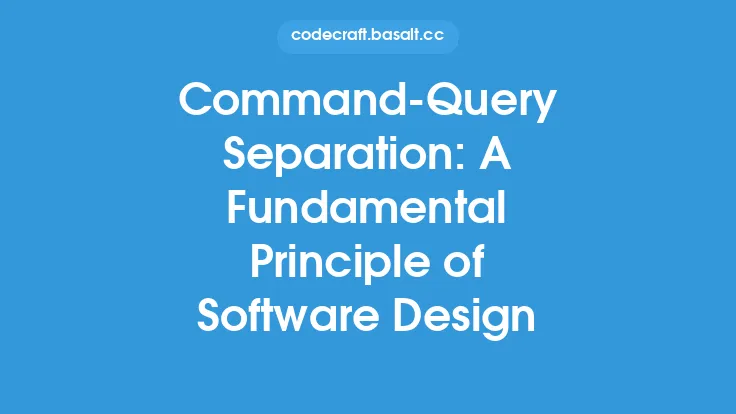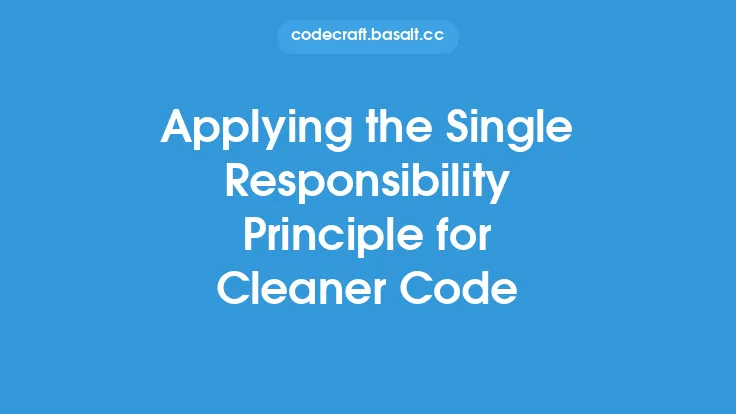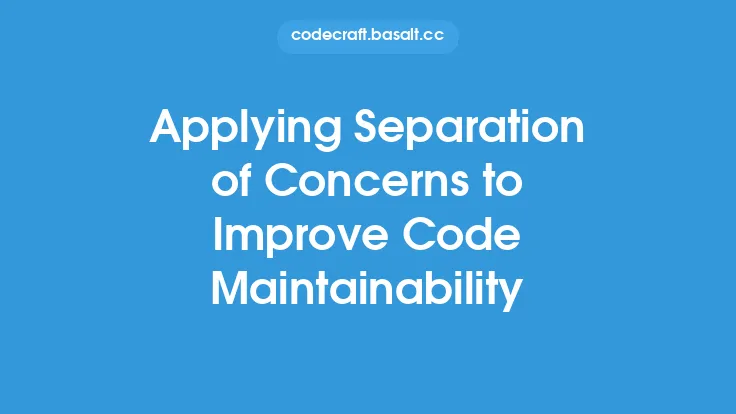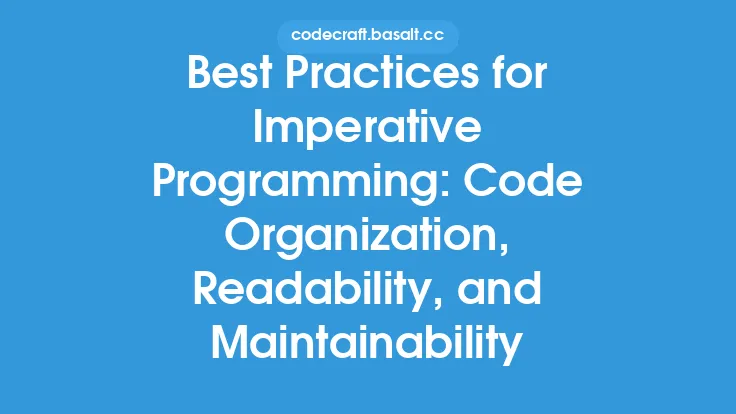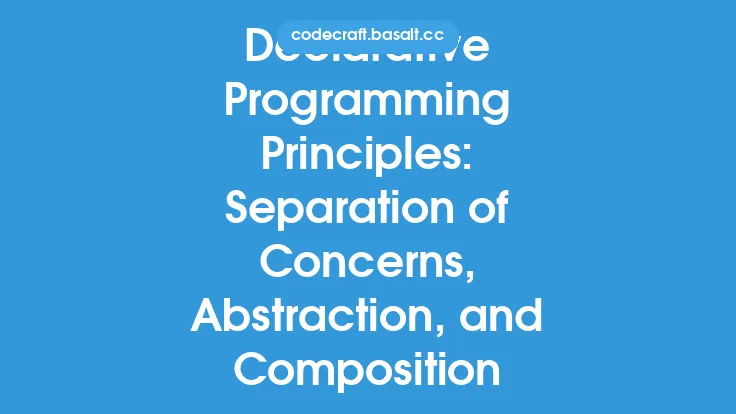Command Query Separation (CQS) is a fundamental principle in software engineering that aims to improve the readability, maintainability, and scalability of code. It was first introduced by Bertrand Meyer, a renowned computer scientist, as a way to separate methods that perform actions (commands) from those that retrieve data (queries). The core idea behind CQS is to ensure that methods either modify the state of an object or return information about it, but not both.
Introduction to Command Query Separation
The Command Query Separation principle is based on the idea that methods can be categorized into two distinct types: commands and queries. A command is a method that modifies the state of an object, while a query is a method that returns information about the object without changing its state. By separating these two types of methods, developers can write more readable, maintainable, and efficient code. CQS is not a new concept, but its application is still relevant today, as it helps developers to write better code and avoid common pitfalls.
Benefits of Command Query Separation
The benefits of applying the Command Query Separation principle are numerous. One of the most significant advantages is improved code readability. When methods are separated into commands and queries, it becomes easier for developers to understand the purpose of each method and how it affects the state of an object. This, in turn, makes it easier to maintain and modify the code, as developers can focus on specific methods without worrying about unintended side effects. Additionally, CQS helps to reduce the complexity of code, making it more modular and easier to test.
Commands and Queries: A Closer Look
To apply the Command Query Separation principle effectively, it's essential to understand the difference between commands and queries. A command is a method that performs an action, such as creating, updating, or deleting data. Commands typically have side effects, meaning they modify the state of an object or the system as a whole. Examples of commands include `save()`, `update()`, and `delete()`. On the other hand, a query is a method that retrieves information about an object without modifying its state. Queries typically do not have side effects and are used to retrieve data, such as `get()`, `find()`, or `calculate()`.
Applying Command Query Separation in Practice
To apply the Command Query Separation principle in practice, developers should follow a few simple guidelines. First, methods should be designed to either modify the state of an object or return information about it, but not both. This means that methods should be either commands or queries, but not a mix of both. Second, commands should be designed to have a clear and specific purpose, such as creating or updating data. Third, queries should be designed to retrieve specific information about an object, without modifying its state. By following these guidelines, developers can write more readable, maintainable, and efficient code.
Example Use Cases
To illustrate the application of the Command Query Separation principle, consider a simple example of a `BankAccount` class. The `BankAccount` class has methods for depositing and withdrawing money, as well as retrieving the account balance. In this example, the `deposit()` and `withdraw()` methods are commands, as they modify the state of the account. On the other hand, the `getBalance()` method is a query, as it retrieves information about the account without modifying its state. By separating these methods into commands and queries, developers can write more readable and maintainable code.
Challenges and Limitations
While the Command Query Separation principle is a powerful tool for improving code readability and maintainability, it's not without its challenges and limitations. One of the main challenges is determining whether a method is a command or a query. In some cases, methods may have both command and query aspects, making it difficult to categorize them. Additionally, CQS may not be applicable in all situations, such as when working with legacy code or complex systems. However, by understanding the principles and benefits of CQS, developers can make informed decisions about when and how to apply it.
Conclusion
In conclusion, the Command Query Separation principle is a fundamental concept in software engineering that aims to improve the readability, maintainability, and scalability of code. By separating methods into commands and queries, developers can write more efficient, modular, and testable code. While CQS may have its challenges and limitations, its benefits make it a valuable tool for any developer looking to improve their coding skills. By applying the principles of CQS, developers can write better code, reduce complexity, and improve the overall quality of their software systems.
